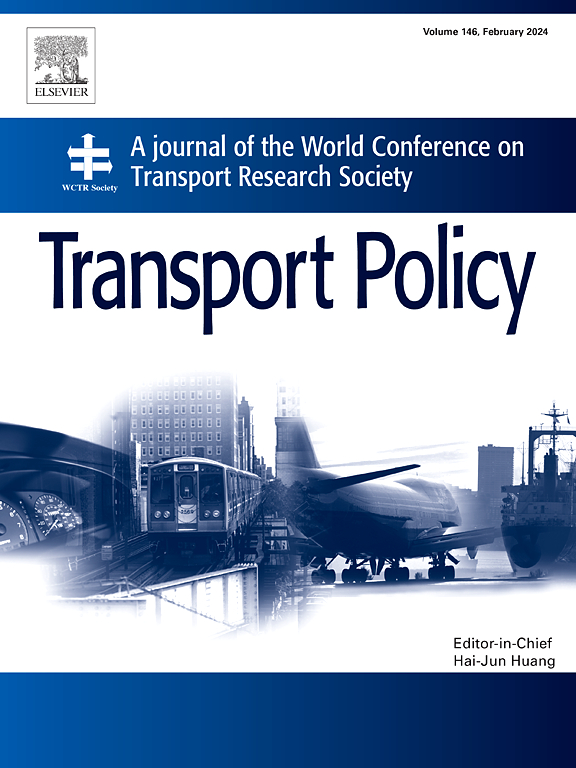Impacts of the sea-rail intermodal transport policy on carbon emission reduction: The China case study
IF 6.3
2区 工程技术
Q1 ECONOMICS
引用次数: 0
Abstract
China introduced the Intermodal Transport Demonstration Project Policy in 2015, spurring the rapid expansion of sea-rail intermodal transport (SRT) at coastal ports. This policy is of crucial importance as SRT is pivotal in supporting the transport sector's achievement of the “double carbon target”. Despite strong policy backing and notable growth of SRT, the impact of these SRT demonstration projects on curbing transport carbon emissions has not been comprehensively evaluated. This study addresses this gap by using panel data from hub seaports across nine provinces and applying a multi-period-continuous difference-in-differences model. The research quantifies SRT's contribution to reducing transport carbon emission reductions as a result of the policy. Key findings indicate: (1) Each 10,000 TEU increase in containerized SRT volume results in a 0.162% reduction in transport carbon emissions, with projected growth by 2025 leading to a 9.02% decrease in emissions. (2) SRT lowers transport energy consumption and carbon emission intensity, fostering a green transformation in energy use. (3) Geographical analysis indicates that policy implementation in the southern region requires further strengthening. This study enhances empirical understanding of low-carbon SRT development in hub ports, emphasizing its critical role in China's transition to decarbonized transport. It also highlights the importance of regional policy effectiveness, offering valuable insights for policymakers striving to promote sustainable transport modes.
海铁联运政策对碳减排的影响:中国案例研究
中国于 2015 年出台了《多式联运示范工程政策》,推动了沿海港口海铁联运(SRT)的快速发展。这一政策至关重要,因为海铁联运在支持交通运输业实现 "双碳目标 "方面发挥着关键作用。尽管有强有力的政策支持,而且有轨电车的发展也很显著,但这些有轨电车示范项目对遏制交通碳排放的影响尚未得到全面评估。本研究利用九省枢纽海港的面板数据,并应用多期连续差分模型,弥补了这一空白。研究量化了 SRT 政策对减少运输碳排放的贡献。主要研究结果表明:(1)集装箱运输 SRT 量每增加 10,000 个标准箱,运输碳排放量就会减少 0.162%,预计到 2025 年排放量将减少 9.02%。(2) SRT 降低了运输能耗和碳排放强度,促进了能源使用的绿色转型。(3)地域分析表明,南部地区的政策实施需要进一步加强。本研究加强了对枢纽港低碳城际轨道交通发展的实证理解,强调了其在中国向非碳化交通转型中的关键作用。它还强调了区域政策有效性的重要性,为努力推广可持续运输模式的政策制定者提供了宝贵的见解。
本文章由计算机程序翻译,如有差异,请以英文原文为准。
求助全文
约1分钟内获得全文
求助全文
来源期刊

Transport Policy
Multiple-
CiteScore
12.10
自引率
10.30%
发文量
282
期刊介绍:
Transport Policy is an international journal aimed at bridging the gap between theory and practice in transport. Its subject areas reflect the concerns of policymakers in government, industry, voluntary organisations and the public at large, providing independent, original and rigorous analysis to understand how policy decisions have been taken, monitor their effects, and suggest how they may be improved. The journal treats the transport sector comprehensively, and in the context of other sectors including energy, housing, industry and planning. All modes are covered: land, sea and air; road and rail; public and private; motorised and non-motorised; passenger and freight.
 求助内容:
求助内容: 应助结果提醒方式:
应助结果提醒方式:


